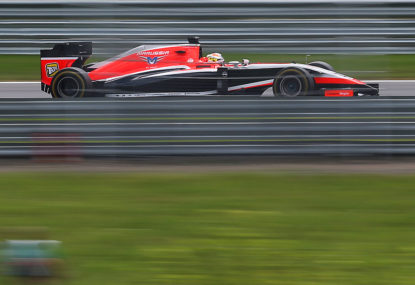There is an inescapable truth to the oft-used business expression change or die. It is true of all things, and no thriving entity can be immune.
Motorsport as a whole has ground its way into the present, willingly in some sectors, less so in others. Formula E is an excellent example of motor racing placing itself firmly in the context of the modern day, while the World Endurance Championship has proven itself to be open to adaptability — and that’s before considering its recent ban on grid girls, that most anachronistic of motorsport traditions.
Even Formula One changes, though progress may be begrudging. Just ten years ago, Formula One ringleader Bernie Ecclestone had little to say about the idea of women competing in his sport.
“Women should be all dressed in white,” he jibed, “like all other domestic appliances.”
But Ecclestone too has found change irresistible. As recently as two weeks ago he seemed to embrace wholeheartedly the participation of women in motorsport — so much so that he designed an entire formula just for the female gender.
“I thought it would be a good idea to give them a showcase,” said Ecclestone.
“We have to start somewhere so I suggested to the teams that we have a separate championship. Maybe that way we will be able to bring someone through to F1.”
In 65 years of Formula One just two women have started a race, those being Maria Teresa de Filippis in the late 1950s and Lella Lombardi in the mid-1970s. No woman has taken to the starting grid in more than 38 years.
“For some reason, women are not coming through, and not because we don’t want them,” said Ecclestone. “Of course we [want them], because they would attract a lot of attention and publicity and probably a lot of sponsors.
“It is only a thought at the moment but I think it would be super for F1 and the whole grand prix weekend.”
The turnaround since those unseemly decade-old comments is truly significant, but for all his good faith — and let’s assume for now that there’s more to this than simply marketing — is female Formula One what motorsport really needs?
The sport’s two current leading ladies — Williams’ Susie Wolff and Lotus’ Camren Jorda — are divided.
Jorda says Formula One has nothing to lose by separating the genders, pointing to the fact the vast majority of international sport is competed in separate male and female spheres.
Wolff, on the other hand, says the few women who have persisted with motorsport have successfully competed with men for their entire careers, so any separation of the genders could only be a step backwards — and, in any case, there would hardly be enough top line female drivers to fill a series.
It is this last point that is particularly salient. Regardless of whether women have a bespoke series in which to compete, motorsport is still perceived as being a man’s world, which continues to deter girls from taking up racing at a young age. The solution lies in breaking this perception.
Motorsport needs more female role models. With more women racers to look up to, a greater percentage of young girls will take up driving, some of whom will progress into the world’s elite formulae and eventually knock on the door to Formula One.
Ecclestone’s thought bubble — and he admitted a thought it is at this stage — misses this point. Even with the invention of a category solely for women, female participation is lacking that first vital link in the chain.
Motorsport needs a more proactive approach. As is the case with most industries around the world, much is being done by the governing body to dispel gender discrimination and promote equality — but in motor racing, a sport that relies on aspirant racers getting involved in karting well before their teenage years, this simply isn’t enough.
What the FIA, the commercial rights holder, and the teams need to do is take a stake in the promotion of female racers. Much in the same way that teams and categories have invested in junior development programmes to nurture young talent, the governing body should be investing in a significant, international-scale development programme for women.
It should make involvement in motorsport as easy as possible from a young age to maximise participation, and thereafter funding should be directed to the management, development, and promotion of the best of the programme’s talent.
Such a programme has the triple benefit of dramatically increasing the number of women in motorsport, decreasing the number of women who have to market their ability based on the “novelty” of being a female racing driver, and create exponentially more female role models to promote motor racing to girls.
It is often said that it will take just one immensely talented woman to break open the motorsport world for the entire gender. That may be true, but the current method cherry-picking female drivers based on sponsorship packages and marketing potential renders the search infinitely more difficult. While we rightly promote the Susie Wolffs, Simona de Silvestros, and Carmen Jordas of motorsport, how many other talented drivers never had the chance to make it so far?
Only when we cast the net wide and invest in the future of women in motorsport in a material way can we expect to return results in any sort of acceptable timeframe. Until then, a female-only formula can only be considered a shortcut to a half-result.





























































































